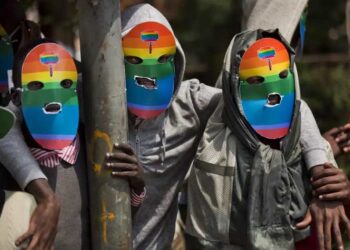Since gaining independence from Britain in 1960, Nigeria has undergone numerous political transformations, from military rule to democratic governance. Understanding the country’s history requires a closer look at the individuals who have held the highest office in the land. Here is a comprehensive list of Nigerian presidents from 1963 to the present, highlighting their contributions, challenges, and legacies.
Nnamdi Azikiwe (1963-1966): Nigeria’s first President, Dr. Nnamdi Azikiwe, was a prominent figure in the country’s fight for independence. He played a critical role in Nigeria’s transition from colonial rule to self-governance. Azikiwe’s tenure as president was cut short by a military coup in 1966.
Major General Johnson Aguiyi-Ironsi (1966): Major General Aguiyi-Ironsi took over as Nigeria’s second President following the coup that ousted Azikiwe. His tenure was short-lived, as another coup in July 1966 led to his assassination and the start of the infamous Biafran War.
General Yakubu Gowon (1966-1975): Following the coup that led to Ironsi’s death, General Yakubu Gowon assumed office as Nigeria’s third President. Gowon’s administration was primarily focused on maintaining Nigeria’s unity during the Biafran War. In 1975, he was overthrown in a bloodless coup.
General Murtala Ramat Mohammed (1975-1976): General Murtala Mohammed’s presidency was short-lived, lasting only 200 days. Despite his brief tenure, he initiated several significant reforms, including the creation of new states and an anti-corruption drive. Mohammed was assassinated in a failed coup attempt in 1976.
General Olusegun Obasanjo (1976-1979): After Murtala Mohammed’s assassination, General Olusegun Obasanjo took over as Nigeria’s fifth President. Obasanjo’s administration focused on rebuilding Nigeria’s economy and laying the groundwork for the country’s transition to democracy. He voluntarily handed over power to a democratically elected government in 1979.
Shehu Shagari (1979-1983): Shehu Shagari was Nigeria’s first democratically elected President, serving from 1979 until 1983. His administration faced numerous challenges, including economic decline and rampant corruption. Shagari’s government was eventually overthrown in a military coup led by Major General Muhammadu Buhari.
Major General Muhammadu Buhari (1983-1985): Major General Muhammadu Buhari’s first stint as Nigeria’s President began following the coup against Shehu Shagari. Buhari’s administration launched the “War Against Indiscipline” to tackle corruption and improve Nigeria’s economy. However, his regime was seen as authoritarian, and he was overthrown in a coup led by General Ibrahim Babangida in 1985.General Ibrahim Babangida (1985-1993): General Ibrahim Babangida’s administration faced numerous challenges, including economic decline and political instability.
Chief Ernest Shonekan (1993): Chief Ernest Shonekan, a civilian, was appointed as Nigeria’s interim president following Babangida’s resignation. Shonekan’s tenure was short-lived, as General Sani Abacha overthrew his government in a coup after only 82 days in office.
General Sani Abacha (1993-1998): General Sani Abacha’s regime was marked by widespread human rights abuses, political repression, and economic decline. He died suddenly in 1998, paving the way for a return to democracy.
General Abdulsalami Abubakar (1998-1999): After Abacha’s death, General Abdulsalami Abubakar assumed the presidency. He initiated a swift transition to democracy and handed over power to a democratically elected government in 1999.
Olusegun Obasanjo (1999-2007): Olusegun Obasanjo returned to the presidency as Nigeria’s first democratically elected president since Shehu Shagari. Obasanjo’s second tenure focused on anti-corruption measures, economic reforms, and infrastructure development. He completed two terms in office, as allowed by the Nigerian constitution.
Umaru Musa Yar’Adua (2007-2010): Umaru Musa Yar’Adua, a former governor of Katsina State, became Nigeria’s 13th president in 2007. His administration introduced the Niger Delta Amnesty Programme to address unrest in the oil-rich region. Yar’Adua’s presidency was cut short by his untimely death in 2010.
Goodluck Jonathan (2010-2015): Goodluck Jonathan, Yar’Adua’s vice president, assumed the presidency following Yar’Adua’s death. Jonathan’s tenure saw improvements in Nigeria’s power sector and the establishment of the Almajiri education system in northern Nigeria. However, his administration faced challenges such as widespread corruption and the rise of the Boko Haram insurgency.
Muhammadu Buhari (2015-Present): Major General Muhammadu Buhari was elected as Nigeria’s 15th president in 2015, marking his return to the presidency after 30 years. Buhari’s administration has focused on combating corruption, improving national security, and reviving Nigeria’s economy. His tenure has been marked by mixed reactions, with some lauding his efforts to tackle corruption and others criticising the slow pace of economic recovery and ongoing security challenges.
In conclusion, Nigeria’s presidential history is marked by periods of military rule, interrupted democratic governance, and a gradual transition to a more stable democracy. The country’s leaders have faced numerous challenges, including corruption, economic decline, and security threats. As Nigeria continues on its path towards growth and development, understanding the roles and legacies of its past presidents is crucial for appreciating the nation’s political landscape.
Image Credit: Emmanuel Ikwuegbu on Unsplash





